Research
Over the years I have worked on a bunch of projects. Here’s a list and a bit of information about them.
You can find my articles on Google Scholar.
2024: Single nuclear spin detection and control in a van der Waals material
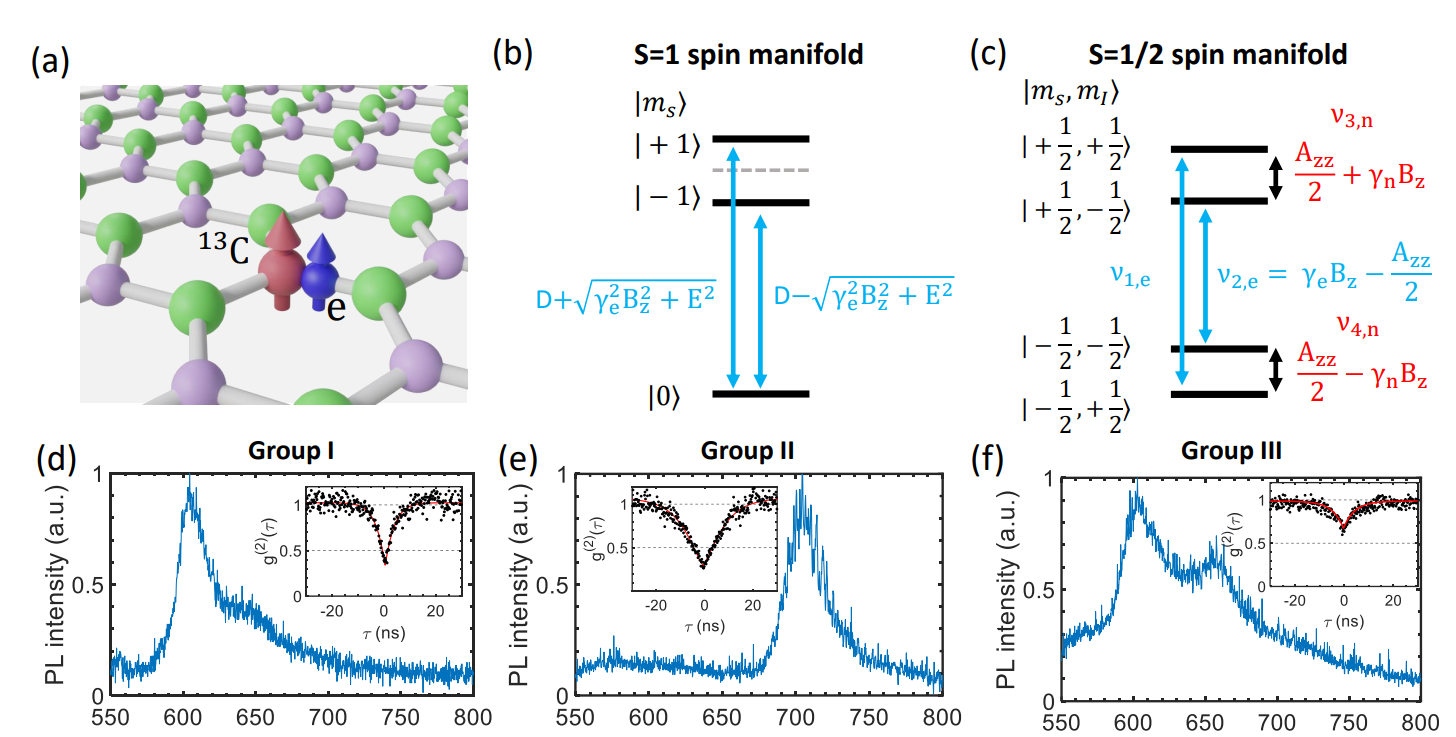
We’ve found single electron-nuclear spin coupling in hexagonal Boron Nitride. This is the first such demonstration in a 2D material. We show we can coherently control the electron-nuclear spin combo and conclusively prove the defects are carbon related. Possible applications of this research would be in quantum communication and on-chip quantum sensing.
Check out the paper on Arxiv.
2024: Nanotube Spin Defects for Omnidirectional Quantum Sensing
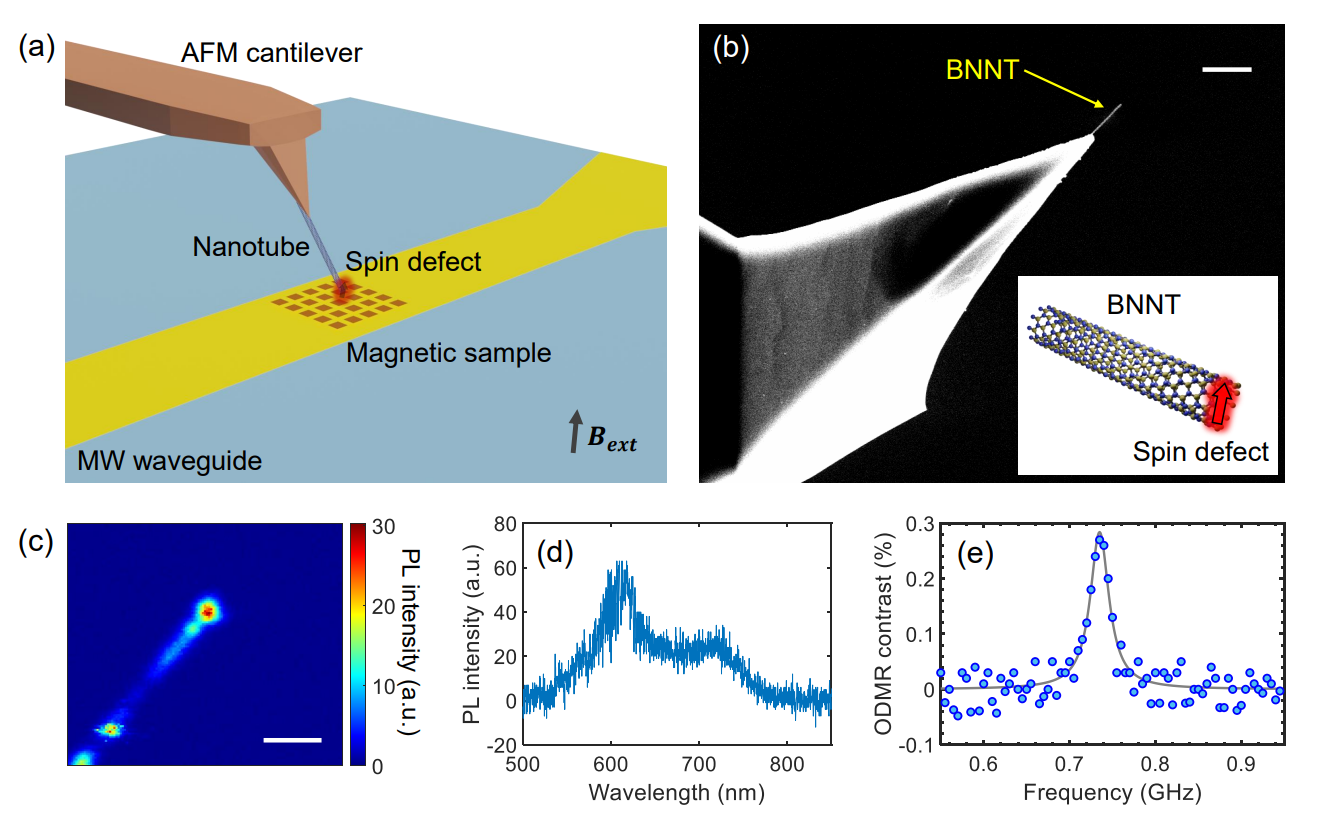
Conventional quantum magnetometers (e.g. diamond NV, hBN $V_B^-$) have a preferential axis of maximum sensitivity, which limits their utility for sensing magnetic fields. We have discovered spin defects in Boron Nitride Nanotubes with omnidirectional sensitivity. We build on this by further developing a near-surface magnetic scanning microscope. We also invent a technique to reliably transfer a BNNT to an AFM tip, which turns the tip into a scanning quantum sensor. This can potentially be used to perform two-in-one magnetic map and surface profile measurements at the atomic scale.
To learn more check out the published paper in Nature Communications.
2023: Quantum sensing of paramagnetic spins in liquids with spin qubits in hexagonal boron nitride
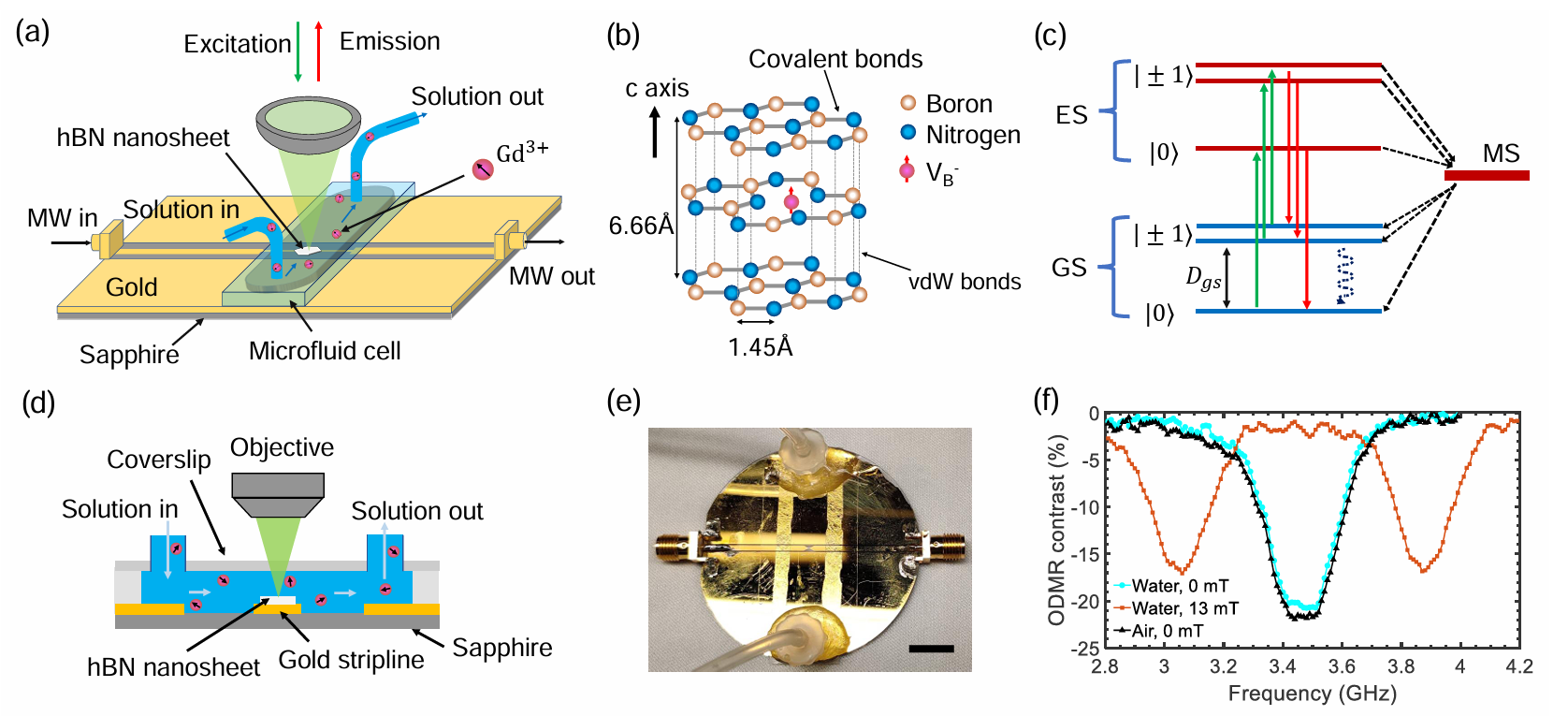
We show a practical application of quantum sensing for real-world applications by using spin defects in Boron Nitride to detect small concentrations of paramagnetic ions in a liquid solution. We combine a microfluid cell with optical readout of the quantum sensors to interface the paramagnetic ions with the sensor. We show we can detect as few as $10^5$ ions in a small volume inside the focus of the laser. This has potential applications for building noninvasive all-optical sensors for ions in liquid solutions.
Check out the published paper in ACS Photonics for more details.
2022: Nuclear spin polarization and control in hexagonal boron nitride
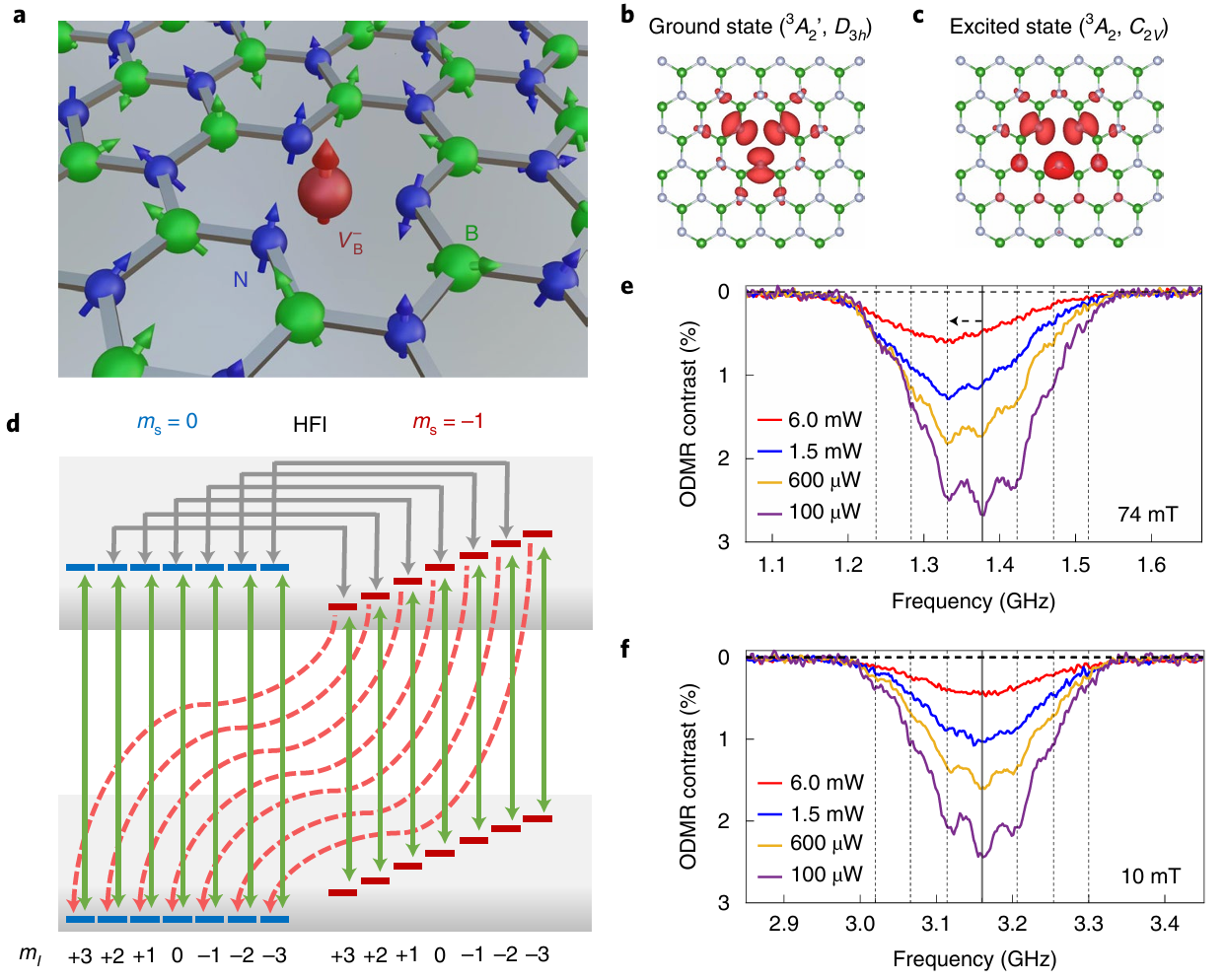
The $V_B^-$ spin defect in hexagonal Boron Nitride is emerging as a prominent solid-state spin qubit system for quantum sensing applications. We demonstrate the polarization and control of the nitrogen nuclei surrounding the $V_B^-$ spin defect, and show that we can achieve 32% polarization under laser excitation in a magnetic field. This opens up new avenues for quantum sensing, communication and networks.
Check out the published paper in Nature Materials for more details.
2022: Light induced quasi-Fermi level splitting in molecular semiconductor alloys
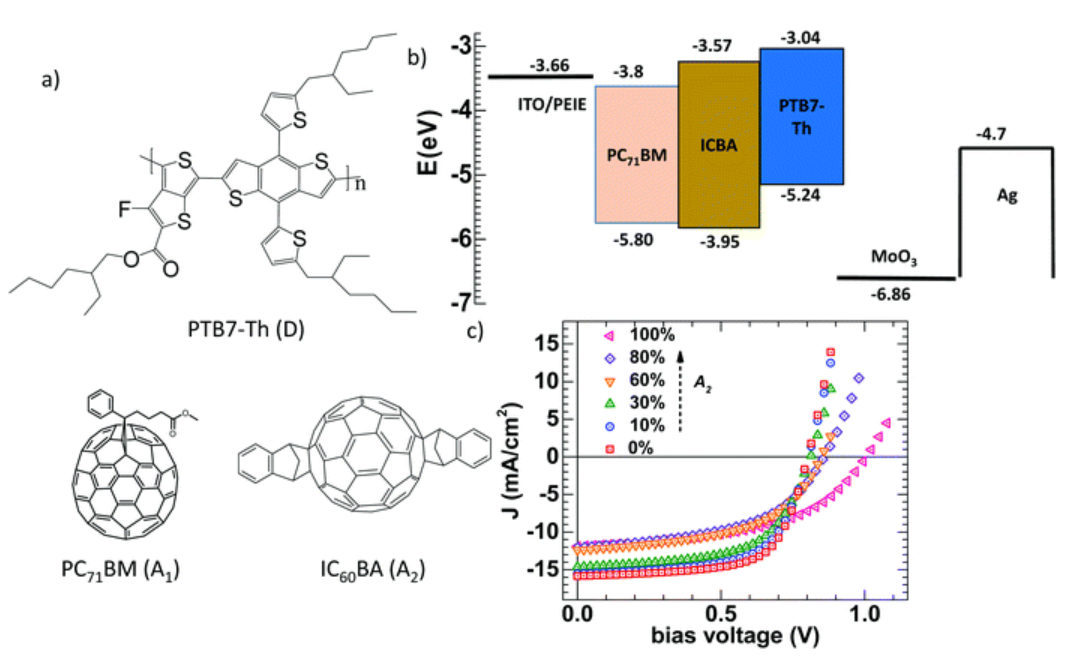
We study the quasi-Fermi level splitting in a series of ternary blended solar cells. We also propose an analytical model based on the photoinduced fermion occupancy based on experimental observations. This is then generalizable to a range of excitonic molecular semiconductor-based solar cells.
2022: Autoencoders for Denoising of Poisson Noise Limited Biological Images
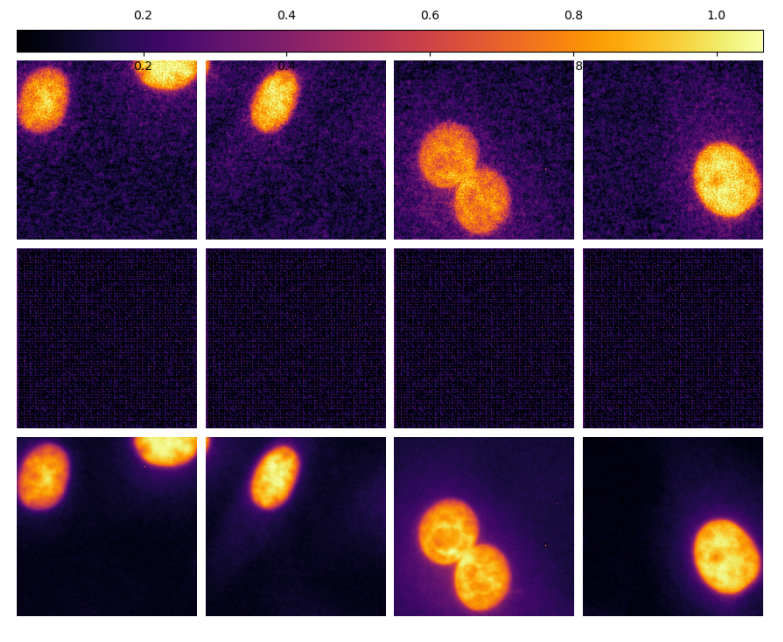
Variational Autoencoders (VAE) have been used to denoise images with Gaussian Noise. The noise in the images is assumed to be drawn from a Gaussian distribution. Autoencoders can reduce the dimensionality of large-sized complex data and then reconstruct it back with minimal loss. By tuning the training process and adding a Gaussian noise component the encoder-decoder system can be made into an effective denoiser. Here we present an extension of this concept for non-Gaussian noise, in this case, Poisson noise, typically generated in images where the amount of incident light per pixel is very small. Such low photon number images are generated in the imaging of biological samples under low light excitation. The physical model is captured in the weights of the autoencoder and deploying it for noise reduction yields a good method to reduce complex computation.
2021: Novel optoelectronic technique for direct tracking of ultrafast triplet excitons in polymeric semiconductor
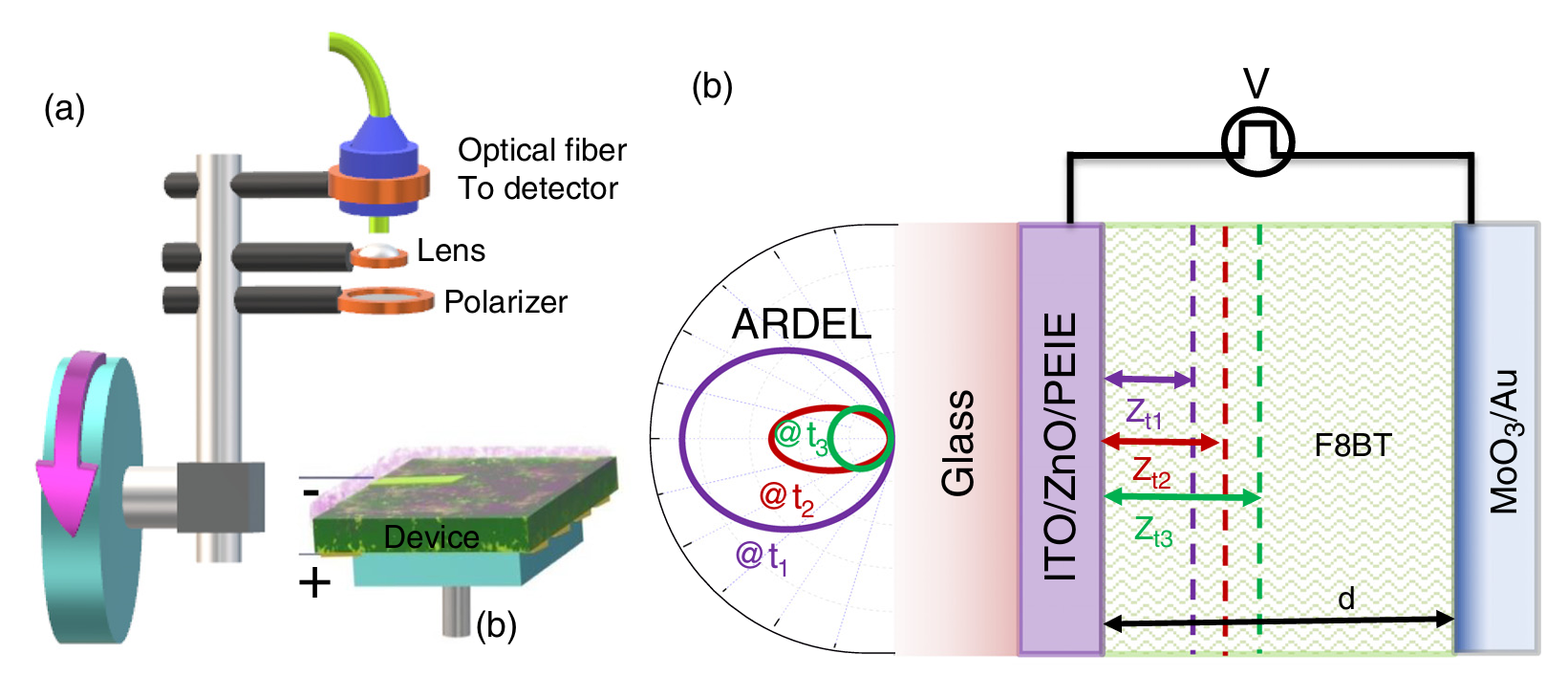
We study the effect of polymer chain packing on triplet diffusion in the polyfluorene-based polymeric system, which is known to give efficient organic light emitting diode (OLED) efficiency for display devices. We have developed a unique method to trace the position of the triplet exciton in the emissive layer of OLEDs by analyzing angle-resolved delayed electroluminescence emission patterns as a function of time, by fitting the observed profiles with the calculated profiles given a certain depth distribution. This study paves a path for better engineering of OLED devices by enabling a better understanding of charge carrier dynamics.
